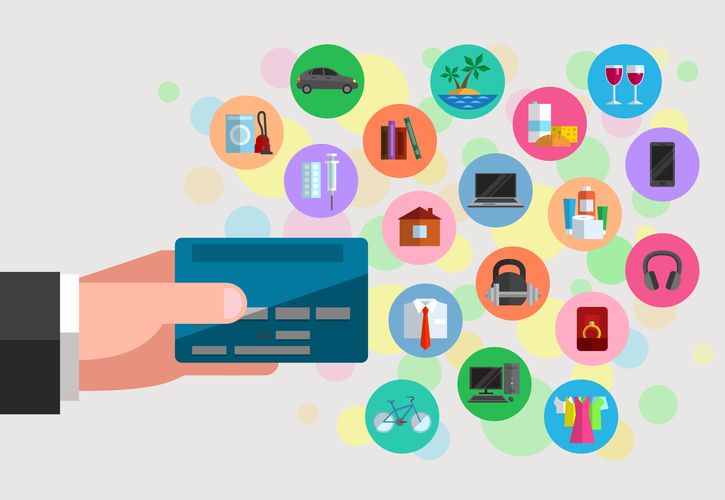UK DIY News
Lockdown Legacies: Ten Shifts In Consumer Behaviour

- Barclaycard Payments teams up with Tom Cheesewright, one of Britain’s leading Futurists, to identify the impact of a year of national lockdowns
- Online supermarket spend takes off, surging 115.2 per cent in February alone, compared to the same month last year
- Home deliveries on the rise, with Brits receiving two more parcels per month than before the pandemic, totalling over 86 packages per year
- Almost two thirds of shoppers have been choosing to shop closer to home, to support the local community
Exactly a year after the first national lockdown, new research from Barclaycard Payments, which processes nearly £1 in every £3 spent in the UK, reveals the 10 biggest shifts in consumer behaviour which have emerged as a result of the pandemic, and are set to outlive it*.
With increased time at home, there have been significant changes in the way people consume goods, including what they buy, the channels that they buy through and how they like to pay. Barclaycard Payments has partnered with Tom Cheesewright, one of Britain’s leading Futurists, to understand what these shifts mean for the future of British retail.
Barclaycard Payments’ Top 10 ‘lockdown legacies’:
1) Online grocery shopping surge
Online grocery shopping has seen consistent growth over the past 12 months, with recent Barclaycard data revealing a 115.2 per cent increase in online grocery spend in February alone, compared to the same month last year. This trend is even more pronounced among the over 65s, whose online supermarket spend more than quadrupled (+332.5 per cent) year-on-year. Almost six in 10 Brits (57 per cent) say they’ll continue to buy at least some of their groceries online even after all restrictions end. However, brick-and-mortar supermarkets will remain crucial for the four in ten (39 per cent) people who plan to continue buying all of their groceries in-store.
2) Growth in home deliveries
With the closure of non-essential shops for extended periods of time, consumers have been receiving an average of two extra deliveries per month since March 2020 (seven parcels now vs five before March 2020). This equates to over 86 packages in total over the course of a year. This growth in deliveries is here to stay, with over half of people expecting to receive either the same amount (47 per cent) or more (10 per cent) in the future.
3) ‘Click & Collect’ boom
One in three (30 per cent) consumers say they have used ‘Click and Collect’ more frequently since the start of the pandemic. On average, shoppers now use the service three times per month compared to twice a month in 2019. Almost all (90 per cent) of those who have been using ‘Click and Collect’ more often since the start of the pandemic will keep this up once all restrictions have been lifted.
4) Rising rate of returns
In the last 12 months, over half (51 per cent) of Brits have returned items that they have bought online, compared to 47 per cent in the same period in 2019 and 46 per cent in 2016. 12 per cent of Brits report returning more because they are not able to try items on in-store and nine per cent have used home deliveries as a try-on service, ordering multiple sizes and colours in the absence of a shop changing room. Returns pose a number of challenges to retailers, both logistically and financially, so it will be interesting to see whether the market moves towards disincentivising excessive returns once lockdown restrictions end, by tightening up returns policies.
5) “Come to me” retail
Since the start of the pandemic, one in 10 (9 per cent) consumers have used “come to me” retail, where a concierge-style service delivers clothing to customers’ homes and waits while they try it on, so that they can immediately return any items they don’t want. The convenience of ”Come to me” is proving popular, with 94 per cent of customers planning to use it again. Of particular interest to fashion retailers, a third (34 per cent) of shoppers said they would be more inclined to buy from a brand offering “come to me” retail as an option, while four in ten (38 per cent) said they would prefer this service to receiving deliveries and returning unwanted items by mail. While this method might not be scalable for brands dealing with higher volumes, it’s a great example of how smart businesses are looking for ways to provide smoother and more seamless shopping experiences.
6) Mobile payments soaring
Lockdowns have changed not only what we buy and where we buy it, but also how we pay for our purchases, with mobile payments growing substantially in the past year. In fact, Barclays consumer debit data reveals that Apple Pay grew rapidly in 2020 compared to 2019, in particular in Leisure & Entertainment, where online debit transactions increased by 70 per cent. With ‘digital wallets’ and mobile payment services soaring, physical wallets are becoming less popular. Three in ten (30 per cent) consumers and over half of 25-34-year olds (55 per cent) say they now regularly leave their wallet or purse behind because all they need is their mobile phone.
7) Staying local
One major positive from the past year is the support people have showed for local and independent businesses, with almost two thirds (64 per cent) of Brits choosing to shop closer to home. Barclaycard Payments data shows shoppers spent an extra 63.3 per cent in February at food and drink specialist stores, such as butchers, bakeries and greengrocers, compared with the same month last year. Shopping locally is set to be a lockdown legacy, with nine in ten (91 per cent) Brits who have been shopping locally throughout the pandemic saying they will keep doing this to support smaller and independent businesses even after all restrictions end.
8) More mindful spending
Nearly three quarters of people (71 per cent) now think more carefully about how they spend their money and nine in ten (92 per cent) of those who do, planning to continue being more mindful of their spending habits even after lockdown lifts. With more time available to scour the internet at home for the perfect gift, half of Brits (50 per cent) also say they have put more thought into what they’ve bought for others, with the majority (83 per cent) of those confident this behaviour will continue. The additional time has also meant people are doing more research to ensure the products they buy are made ethically (46 per cent), with 88 per cent planning to continue this shift in behaviour after lockdown ends. Retailers can take advantage of this by highlighting their ‘mindful’ credentials; nudging more consumers to make a purchase.
9) Dine-at-home experiences
In an attempt to recreate the restaurant experience at home, 10 per cent of Brits tried a DIY meal kit for the first time during lockdown, and 9 per cent have spent more money on them since March 2020. Around a quarter (24 per cent) of those who have been ordering at-home restaurant kits, will continue doing so even after hospitality venues reopen and one in five (21 per cent) will still order at-home alcoholic drinks tasting experiences. While many bars/restaurants may have seen this type of product as a lifeline during lockdown, dine-at-home experiences could still be valuable sources of revenue even after they’ve reopened their doors.
10) Investing in infrastructure
Encouragingly, Barclaycard Payments’ research with retailers shows that small and medium sized businesses are responding to this new landscape, with nearly three in ten (29 per cent) planning to invest in new equipment and technology in 2021, and (13 per cent) viewing technology as the top opportunity for growth over the next year**.
Tom Cheesewright, one of Britain’s leading Applied Futurists, comments on these ‘lockdown legacies’ and what they mean for the retail industry post-pandemic: “Echoes of this pandemic will be heard long after lockdown is lifted through a sustained shift in our buying behaviours. Changes we expected to happen over a decade have been condensed into a year, leading us to ask: what's next?
“The trend towards online and concierge services look set to continue, with shoppers seeking ever greater convenience and clawing back time to spend elsewhere. Retailers that can strip friction from their sales process while making us feel special will continue to succeed.
“Meanwhile, we continue to seek a greater connection with our local community, going against the all-digital trend. Suburban stores that have survived lockdown look set to thrive when it lifts.”
Kirsty Morris, Managing Director at Barclaycard Payments, said: “A year of on-and-off lockdown restrictions have accelerated many retail trends and created some new, unexpected ones. We can’t wait for the pandemic to be over, but in many ways it’ll be here forever through the consumer habits it has helped shape.
“Retailers need to respond to these trends. Now more than ever, Brits expect shopping to be convenient, quick and good value-for-money. For merchants this means investing in e-commerce offerings and payments infrastructures to accommodate more customer-focused shopping experiences. Barclaycard’s Smartpay gateway, for instance, supports one-click purchases and allows buyers to pay with a number of different methods in a smooth, safe and seamless way.”
Source : Barclaycard
Thank you for the excellent presentation that you gave at Woodbury Park on Thursday morning. It was very interesting and thought-provoking for our Retail members. The feedback has been excellent.











































